Great schools all look to improve their student’s lives through an education that is meaningful. Over the years, individuals and companies have focused on the singular approach towards retention and success. These programs required training to know how to implement improvement practices in the school. If you are reading this as a school executive or faculty member, I know you remember these training programs. Topics were to identify students at risk, learning styles, higher empathy, improvement of student self-image and soft skills. How did your training sessions work? Did you have a one-, two- or three-day session and then buy the materials to complete the seminar?
This article is not meant to critique or knock these programs. But, you have to ask yourselves, how have you sustained the excitement and program continuation? What are the practices that make the program work for a lifetime? Programs in education often are linear. We present practice with training. If you were to look at the attendance of the members attending, how many are still working in the school in one year, two years or three years later?
Little has been done to refresh ongoing practitioners and new employees. New employees often wait until the next training takes place. This is just enough time to possibly lose students before staff training can take place. Success in the school takes place often right after the training. The “Hawthorne Effect” (when individuals realize they are being observed with a new practice the novelty creates a temporary increase in performance) happens when experiences by all of us in our developments and projects with short-term training may have limited time value. Intentions were admirable when we were all looking for the “magic switch”.
Solutions to our plight lie in the type of activities that change behavior which then has support for lasting success.
1. Our capabilities today allow us to recall history of performances by collecting data from programs, courses and institutions.
2. From our data collection we can do a complete data analysis to make appropriate and equitable conclusions.
3. Our analysis gives a proper perspective to create a plan for improvement. This plan becomes an individual plan of improvement for each member of your staff.
4. It is much easier to successfully obtain a transfer of ownership to each individual when it is equitable and fair with supportive intent.
5. When support is put into practice each individual can execute a plan to improve.
6. Cyclical reoccurrence creates follow-up to review new data and complete an analysis for improvement.
To maintain success, plans need to acquire a self-sustaining and cyclical nature. Success in companies, sports and schools comes from a process. Connecting the six steps above with a process builds a foundation that is maintained as long as you repeat the process in your school.
It is time to build a foundation to create higher success levels for faculty, one that meets compliance expectations, higher graduation rates and student satisfaction improvement. Stop your linear training and create a process that becomes part of the business practice in your school. Professional development becomes a reality with individual practicality.
If you have an interest on how to accomplish these successes in your school please contact me and I will share.
Featured posts
May 16, 2023
May 16, 2023
May 16, 2023





